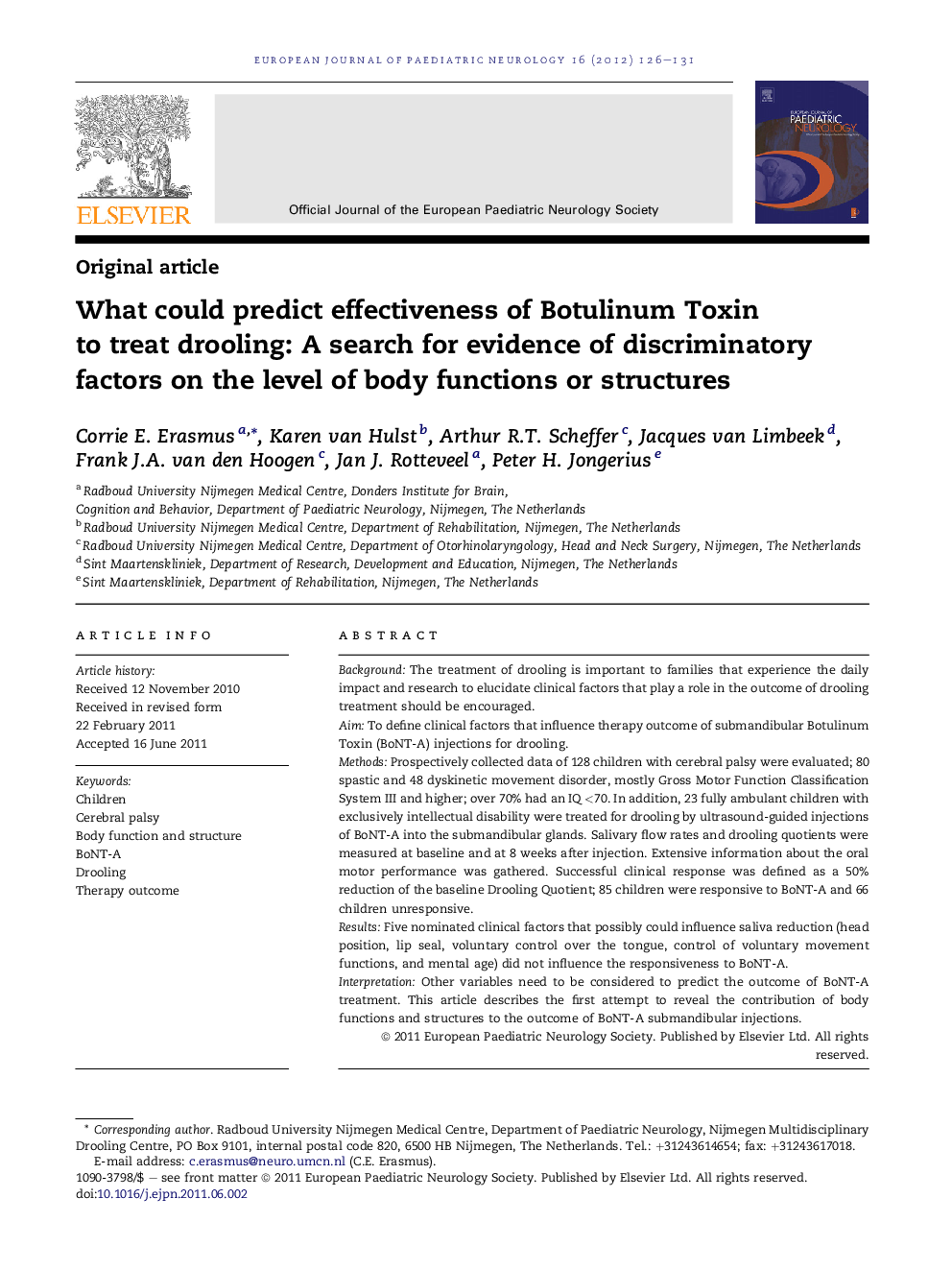| Article ID | Journal | Published Year | Pages | File Type |
|---|---|---|---|---|
| 3053991 | European Journal of Paediatric Neurology | 2012 | 6 Pages |
BackgroundThe treatment of drooling is important to families that experience the daily impact and research to elucidate clinical factors that play a role in the outcome of drooling treatment should be encouraged.AimTo define clinical factors that influence therapy outcome of submandibular Botulinum Toxin (BoNT-A) injections for drooling.MethodsProspectively collected data of 128 children with cerebral palsy were evaluated; 80 spastic and 48 dyskinetic movement disorder, mostly Gross Motor Function Classification System III and higher; over 70% had an IQ <70. In addition, 23 fully ambulant children with exclusively intellectual disability were treated for drooling by ultrasound-guided injections of BoNT-A into the submandibular glands. Salivary flow rates and drooling quotients were measured at baseline and at 8 weeks after injection. Extensive information about the oral motor performance was gathered. Successful clinical response was defined as a 50% reduction of the baseline Drooling Quotient; 85 children were responsive to BoNT-A and 66 children unresponsive.ResultsFive nominated clinical factors that possibly could influence saliva reduction (head position, lip seal, voluntary control over the tongue, control of voluntary movement functions, and mental age) did not influence the responsiveness to BoNT-A.InterpretationOther variables need to be considered to predict the outcome of BoNT-A treatment. This article describes the first attempt to reveal the contribution of body functions and structures to the outcome of BoNT-A submandibular injections.
► We explore the effectiveness of BoNT-A for drooling on functional level. ► Head position, lip seal, tongue and movement control, and mental age do not predict outcome. ► Observations give insight into the drooling treatment with BoNT-A.
